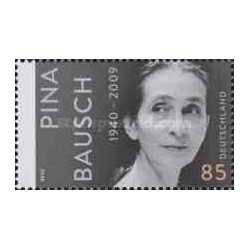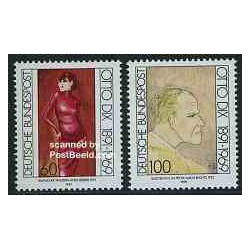- جدید
- ناموجود



توجه : درج کد پستی و شماره تلفن همراه و ثابت جهت ارسال مرسوله الزامیست .
توجه:حداقل ارزش بسته سفارش شده بدون هزینه پستی می بایست 100000 ریال باشد .
توجه : جهت برخورداری از مزایای در نظر گرفته شده برای مشتریان لطفا ثبت نام نمائید.
| Sir John Monash | |
|---|---|
Sir John Monash c.1920s
|
|
| Born | (1865-06-27)27 June 1865 Melbourne, Victoria |
| Died | 8 October 1931(1931-10-08) (aged 66) Melbourne, Victoria |
| Allegiance | |
| Service/branch | Australian Army |
| Years of service | 1884–1920 |
| Rank | General |
| Commands held | Australian Corps (1918) 3rd Division (1916–18) 4th Infantry Brigade (1914–16) 13th Infantry Brigade (1913–14) |
| Battles/wars |
First World War |
| Awards | Knight Grand Cross of the Order of St Michael and St George Knight Commander of the Order of the Bath Volunteer Decoration[1] Mentioned in Despatches (6) Grand Officer of the Legion of Honour (France) Croix de Guerre (France) Grand Officer of the Order of the Crown (Belgium) Croix de Guerre (Belgium) Distinguished Service Medal (United States) |
| Other work | Manager State Electricity Commission of Victoria (1920–31) Vice-Chancellor University of Melbourne (1923–31) |
General Sir John Monash GCMG, KCB, VD (/ˈmɒnæʃ/; 27 June 1865 – 8 October 1931) was a civil engineer and an Australian military commander of the First World War. He commanded the 13th Infantry Brigade before the war and then, shortly after its outbreak, became commander of the 4th Brigade in Egypt, with whom he took part in the Gallipoli campaign. In July 1916 he took charge of the newly raised 3rd Division in northwestern France and in May 1918 became commander of the Australian Corps, at the time the largest corps on the Western Front. The successful Allied attack at the Battle of Amiens on 8 August 1918, which expedited the end of the war, was planned by Monash and spearheaded by British forces including the Australian and Canadian Corps under Monash and Arthur Currie. Monash is considered one of the best Allied generals of the First World War and the most famous commander in Australian history.
Monash was born in Dudley Street,[2] West Melbourne, Victoria, on 27 June 1865, the son of Louis Monash and his wife Bertha, née Manasse.[3] He was born to Jewish parents, both from Germany (the family name was originally spelt Monasch and pronounced with the emphasis on the second syllable[citation needed]), living in Krotoschin in the Kingdom of Prussia, now Krotoszyn in the Greater Poland Voivodeship, Poland.[clarification needed][4] The family spoke German as their native language, and some sources describe them as being of German origin.[5] From 1914 until his death, Sir John Monash had no good reason to attract attention to his German background. His parents' original home was close to where the German general Erich Ludendorff was born. As might have been expected from a man brought up by cultivated German parents who had arrived in Australia barely two years before John's birth, Monash spoke, read, and wrote German fluently.[6]
In 1874, the family moved to the small town of Jerilderie in the Riverina region of New South Wales, where his father ran a store. Monash later claimed to have met the bushranger Ned Kelly during his raid there in 1879.[7] Monash attended the public school and his intelligence was recognised. The family was advised to move back to Melbourne to let John reach his full potential, and they moved back in 1880 (Sam Aull). He was educated under Alexander Morrison at Scotch College, Melbourne, where he passed the matriculation examination when only 14 years of age.[citation needed] At age 16, he was dux of the school.[2] He graduated from the University of Melbourne: a Master of Engineering in 1893; a Bachelor of Arts and Bachelor of Law in 1895,[2] and a Doctor of Engineering in 1921.[8]
On 8 April 1891, Monash married Hannah Victoria Moss (1871–1920), and their only child, Bertha, was born in 1893. He worked as a civil engineer, and played a major role in introducing reinforced concrete to Australian engineering practice. He initially worked for private contractors on bridge and railway construction, and as their advocate in contract arbitrations. Following a period with the Melbourne Harbour Trust, in 1894 he entered into partnership with J. T. N. Anderson as consultants and contractors. When the partnership was dissolved in 1905 he joined with the builder David Mitchell and industrial chemist John Gibson to form the Reinforced Concrete & Monier Pipe Construction Co, and in 1906 with them and businessmen from South Australia, to form the S. A. Reinforced Concrete Co.[9] He took a leading part in his profession and became president of the Victorian Institute of Engineers and a member of the Institution of Civil Engineers, London.[2]
Monash joined the university company of the militia in 1884, and he became a lieutenant in the North Melbourne battery in 1887. He was promoted to captain in 1895, major in 1897, and in 1906 he became a lieutenant-colonel in the intelligence corps. He was colonel commanding the 13th Infantry Brigade in 1912.[2]
When the First World War broke out in August 1914, Monash became a full-time Army officer, accepting an appointment as the chief censor in Australia.[10] Monash did not enjoy the job, and was keen for a field command.[11] In September, after the Australian Imperial Force was formed, he was appointed as the commander of the 4th Infantry Brigade, which consisted of four battalions: the 13th, 14th, 15th and 16th.[12] His appointment was met with some protest within the military, in part due to his German and Jewish ancestry, but Monash was supported by numerous high-ranking officers, including James Legge, James McCay and Ian Hamilton, and his appointment stood.[13]
When the first contingent of Australian troops, the 1st Division, sailed in October, the 4th Brigade remained behind. Training was undertaken at Broadmeadows, Victoria, before embarking in December 1914. After arriving in Egypt in January 1915, Monash's brigade established itself at Heliopolis, where it was assigned to the New Zealand and Australian Division under Major General Alexander Godley.[14] After a period of training, in April, the brigade took part in the Gallipoli campaign against the Turks. Assigned the role of divisional reserve, Monash came ashore early on 26 April.[3] The brigade initially defended the line between Pope's Hill and Courtney's Post, and the valley behind this line became known as "Monash Valley".[15] There he made a name for himself with his independent decision-making and his organisational ability.[16] He was promoted to brigadier general in July, although the news was marred by spiteful rumours that were passed in Cairo, Melbourne and London about him being a "German spy".[3]
During the August offensive that was launched by the Allies to break the deadlock on the peninsula, Monash's brigade was to conduct a "left hook" to the capture of Hill 971, the highest point on the Sari Bair range.[17] On the evening of 6/7 August, the brigade launched its attack, but poor maps, heavy resistance and the mountainous terrain defeated them. Elsewhere, the offensive also stalled,[18] resulting in disaster for the last co-ordinated effort to defeat the Turkish forces on the Gallipoli Peninsula. By mid-August, Monash's brigade was down to just 1,400 men out of the 3,350 it had begun the campaign with.[19] On 21 August, Monash led them in an attack on Hill 60, before it was withdrawn from the peninsula for rest. While the brigade recuperated on Lemnos, Monash took leave in Egypt, where he learned of his appointment as a Companion of the Order of the Bath.[3] In November, the 4th Brigade returned to Gallipoli, occupying a "quiet sector" around Bauchop's Hill. Monash used his engineering knowledge to improve his brigade's position to withstand the winter, and he worked to improve the conditions that his troops would have to endure, but in mid-December the order to evacuate the peninsula came.[20]
Following the withdrawal from Gallipoli, Monash returned to Egypt where the AIF underwent a period of reorganisation and expansion. This process resulted in the 4th Brigade being split and providing a cadre of experienced personnel to form the 12th Brigade. It was also reassigned to the 4th Division.[21] After a period of training, Monash's brigade undertook defensive duties along the Suez Canal. On 25 April 1916, the first anniversary of the landing at Gallipoli, while at Tel-el-Kebir, Monash and his men solemnly observed Anzac Day. Monash distributed red ribbons to soldiers present at the first landing and blue ribbons to those who came later.[22]
In June 1916, Monash and his command were transferred to the Western Front, being sent to the front around Armentières. In July, Monash was promoted to major general and placed in command of the Australian 3rd Division.[3] He trained the division in England with attention to detail, and after the division was sent to the Western Front in November 1916, led stage-by-stage to the nearest approach that could be improvised to the conditions of actual warfare. He was involved in many actions, including Messines, Broodseinde, and the First Battle of Passchendaele, with some successes, but with the usual heavy casualties. The British High Command was impressed by Monash's abilities and enthusiasm. In May 1918, he was promoted to lieutenant general and made commander of the Australian Corps, at the time the largest individual corps on the Western Front.[23]
Lieutenant General Sir John Monash later described the recapture of the town of Villers-Bretonneux on 25 April 1918 after the Germans had overrun the 8th British Division under General William Heneker as the turning-point of the war. Sir Thomas William Glasgow's 13th Brigade, and Harold Elliott's 15th Brigade, recaptured Villers-Bretonneux.[24]
Monash, despite not being a professionally trained officer, was a noted advocate of the co-ordinated use of infantry, aircraft, artillery and tanks. He wrote:[25]
... the true role of infantry was not to expend itself upon heroic physical effort, not to wither away under merciless machine-gun fire, not to impale itself on hostile bayonets, nor to tear itself to pieces in hostile entanglements—(I am thinking of Pozières and Stormy Trench and Bullecourt, and other bloody fields)—but on the contrary, to advance under the maximum possible protection of the maximum possible array of mechanical resources, in the form of guns, machine-guns, tanks, mortars and aeroplanes; to advance with as little impediment as possible; to be relieved as far as possible of the obligation to fight their way forward; to march, resolutely, regardless of the din and tumult of battle, to the appointed goal; and there to hold and defend the territory gained; and to gather in the form of prisoners, guns and stores, the fruits of victory.
تشکر نظر شما نمی تواند ارسال شود
گزارش کردن نظر
گزارش ارسال شد
گزارش شما نمی تواند ارسال شود
بررسی خود را بنویسید
نظر ارسال شد
نظر شما نمی تواند ارسال شود

check_circle
check_circle



















